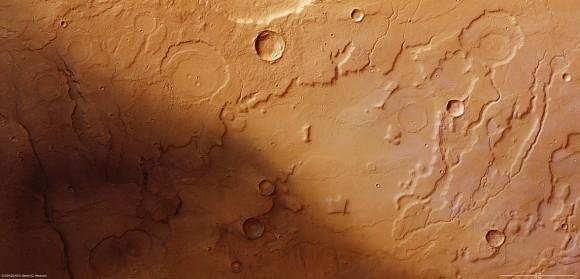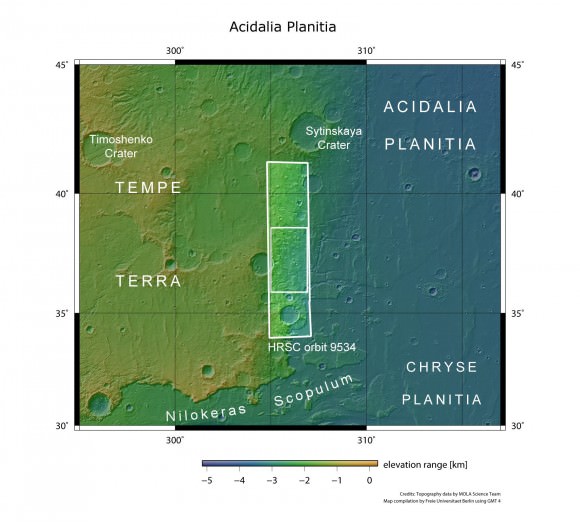
The transition between Acidalia Planitia and Tempe Terra from the Mars Express High-Resolution Stereo Camera (HRSC). Credit ESA/DLR/FU Berlin (G. Neukum)
ESA’s Mars Express orbiter has sent back images revealing terrain that seems to have been sculpted by flowing water, lending further support to the hypothesis that Mars had liquid water on its surface at some point.
The region seen above in a HRSC image is along the border of the Acidalia Planitia region, a vast, dark swath of Mars’ northern hemisphere so large that it’s visible from Earth.
In 1877 the Italian astronomer Giovanni Schiaparelli named the region after a mythical fountain, where the three Graces of Greek mythology were said to have bathed.
Although there may not be any fountains or ancient Immortals within Acidalia Planitia, there may have been water — enough to carve serpentine channels and steep scallops along the edges of wide valleys, much in the same way that the Grand Canyon was carved by the Colorado River.
In the HRSC image some of the etched valleys extend outwards from craters, implying that they were created by water emptying out from within the craters. In addition, sediments present within older craters indicate that they were once filled with water, likely for an extended time.
With images like these, so reminiscent of similar features found here on Earth, it’s hard to discount that Mars once had liquid water upon its surface; perhaps some of it still remains today in pockets beneath the ground!
Read more on the ESA site here.
Source: Universe Today

No hay comentarios:
Publicar un comentario